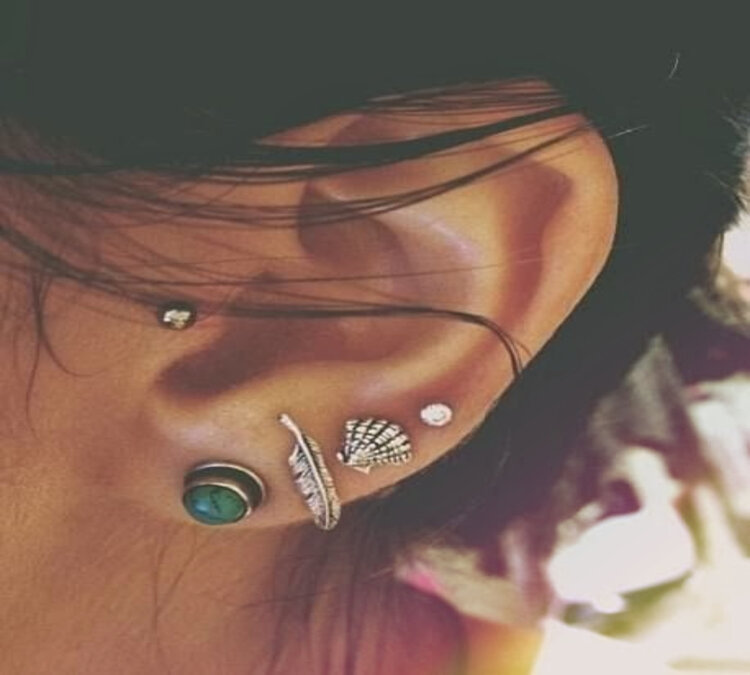Decorating with
earrings, what if ear infections occur?
Ear piercing
for adornment and wearing, earring is a common occurrence. But how do we deal
with infections that may occur later in these holes, especially if the holes
are in the cartilage of the ear and not in the area of the ear
lobe only? Here is a collection of home remedies ...
Earring infections are often of low risk and can be dealt with simple
treatments at home. In the case of ear lobe inflammation, the Mayo
Clinic recommends making a simple solution at home to clean the site of the
infection.
Itching, redness, or the appearance of fluid followed by a crust after
making a new ear piercing is common in the first weeks after piercing
the ear. The solution is made by adding one and a half tablespoons of
salt to a cup of water and stirring the liquid until the salt melts and then
cleaning the area of inflammation using a cotton swab immersed in the
solution. At the end of the cleaning process using saline solution, the ear
is dried using a tissue, then a special cream containing an antibiotic can be
added after consulting a pharmacist.
But it is not possible to deal with all infections of ear holes in
the same way, so if the hole is located in the cartilage of the ear and
not only in the lobe, we may need medical intervention. Ear cartilage is
the hard tissue surrounding its edge, and piercing it sometimes causes pain,
redness, swelling, and itching, which requires a visit to the doctor.
The NHS, the largest health site in Britain, alerts the symptoms of
infection in the ear piercing with an infection, which is swelling and
pain in the area around the piercing, blood or pus coming out of the piercing,
and a feeling of warmth or a shiver.
The site also provides a set of tips for those interested in piercing
their ears to avoid infection or contamination of the piercing.
The site advises looking for a body specialized in the drilling
process and cleaning it twice a day using warm water or saline solution after
the drilling process. The earrings should also be moved gently during the
cleaning process with water or solution while avoiding changing their position
if the piercing site is dry.
Whether after piercing the ear or even for old piercings, the
German site Wunderweib identifies the causes of
infections: wearing earrings made of materials that can cause inflammation such
as nickel, poor cleaning of the holes, injury to piercing wounds, or wearing
heavy earrings.
The German
website provided a set of natural remedies that can be easily prepared
and used at home for these infections:
The site recommends using chamomile (chamomile) as an anti-inflammatory,
whether by placing it as a concentrated oil in the inflamed hole or by wiping
the hole with warm chamomile tea
using a clean cotton swab every half hour.
Tea tree oil also helps treat inflammation due to its ability to
sterilize, and it can be used by adding drops of it on a clean cotton swab and
placing it on the hole a few times daily.
Lavender oil (lavender) also can sterilize by killing bacteria, as
well as its pain-relieving properties, using a few drops.
Zinc ointments can also be used to treat piercings, as well as their
ability to moisturize the skin.
In addition to its ability to strengthen the immune system, vitamin C can
fight infections. Therefore, doctors advise taking a tablet daily and eat foods
rich in it.



0 Comments